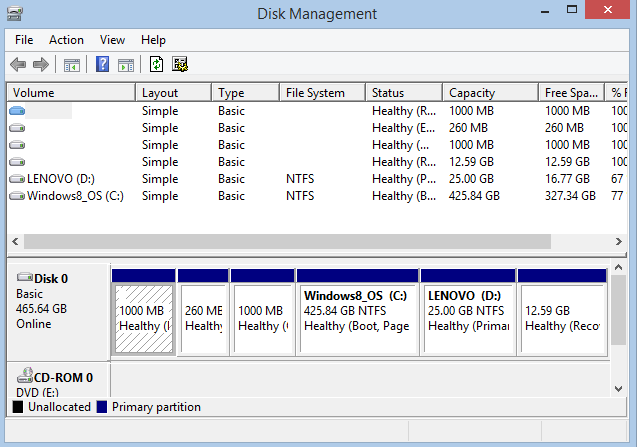
- #Disk management utilities for mac how to#
- #Disk management utilities for mac mac os x#
- #Disk management utilities for mac software#
- #Disk management utilities for mac windows#
We recommend GUID for most users.Īfter clicking “OK” we now need to partition the drive. Because our example hard drive is greater than 2TB Apple does not give us the option to select MBR, only GUID (GPT) and Apple Partition map. Apple Partition Map is also an older legacy method of initializing drives, and is only necessary if you need to use the drive as a start up disk on a PowerPC-based Mac.
#Disk management utilities for mac windows#
MBR is the older legacy method of initializing drives, and is only necessary if you need to access the drive on a Windows XP system (XP is incompatible with GPT and Apple Partition Map). Here we have options for GUID ( GPT) and MBR, but we’re also presented with Apple Partition Map. The quickest way to open the Disk Management Console in any Windows version is to press the Windows and R keys together on your keyboard to open the Run dialog box: It lets you create partitions on your new blank hard drive so Windows can make use of it for data storage and recognize it as a drive letter in Windows Explorer.

This console shows all of the drives connected to the computer and information about how they are currently configured. Windowsįor Windows XP, Vista, 7, 8/8.1, and Windows 10, the experience is basically the same, and we’ll focus on using the Windows Disk Management Console. If you wish to skip to our quick instructions without the extended walk-through information click here. If you have multiple external hard drives connected we recommend disconnecting them all prior to initializing your new drive as well, just as a precaution. However, if there are other drives in use on your system, it’s absolutely critical to pay close attention that you don’t erase the wrong drive. In the case of a new drive, that’s not a matter for concern-it does not have any data on it yet to worry about. Initializing and formatting a hard drive will erase *all* information on that drive. If you are trying to access existing data or attempting data recovery on your hard drive and are encountering issues, please see this post here.īefore we get started, a brief word of caution is essential. We’ll be using a 4TB hard drive as our example.

They also apply to new hard disks that are installed inside your computer and potentially other docking stations/enclosures/adapters. The following steps apply to our USBC-SATA-V, USB3-SATA-UASP1, USB3-SATA-U3, and our entire Plugable Storage System lineup.
#Disk management utilities for mac mac os x#
We’ll cover the most common scenarios we run into, starting with Windows and finishing with Mac OS X instructions.
#Disk management utilities for mac software#
Open "Security & Privacy" in the "System Preferences" menu.Ĭlick the "Allow" button next to the message, “System software from developer "Samsung Electronics" was blocked from loading”.Initializing prepares the drive to be used by the computer, partitioning sets aside specific areas of the disk for data, and formatting sets up the framework the computer uses to store that data.
#Disk management utilities for mac how to#
Please note that the software for the T7 Touch and T7 is different from the software for previous generations of portable SSD (T5, X5, and lower).ġ Please refer to the following link for more details on how to find out your macOS version - Ģ.Ĝhange software settings in your system running macOS in order to use the software. The latest version of the Portable SSD Software can be found at. If you encounter a problem when running the Samsung Portable SSD software on macOS, please follow the steps below:ġ.Ĝheck which version of macOS your system is running and whether you have the latest version 1 of the Portable SSD Software (version 1.6.6 or higher). The issues vary depending on the macOS version.


 0 kommentar(er)
0 kommentar(er)
